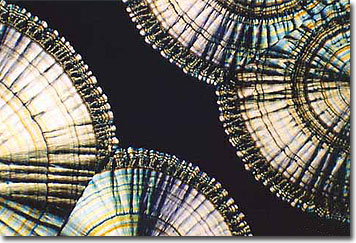Loes Modderman
Vitamin C (Ascorbic Acid)
"Good for what ails you" claim supporters of the late Dr. Linus Pauling when singing the praises for vitamin C or ascorbic acid. Once a valuable cure for scurvy utilized by the Royal Navy during long sea voyages (in the form of citrus fruit), vitamin C is a water-soluble vitamin important in forming collagen and aiding in the absorption of iron by the body.

Whether taken in synthesized tablet form or via a nutritious, balanced diet with naturally rich (orange juice, rose hips, tomatoes) or fortified (grape juice and breakfast cereals) food sources, it is important for humans to supplement their diets with ample vitamin C. For some people the federal government's recommended daily allowance of 60 milligrams is not enough and they turn towards mega-doses of vitamin C to battle colds, other viruses, and even cancer (although the anti-carcinogenic properties of vitamin C are hotly disputed).
In these harried days of fast-food emporia and highly processed foods lacking a significant degree of nutrition, millions of people are still choosing to add vitamin C to their diets. Originally, ascorbic acid was only available from natural sources such as citrus fruits and juices, but increasing numbers of processed foods are often fortified with synthetic forms of the vitamin. Whether natural from the garden in the form of rose hips, or synthesized by a pharmaceutical plant, vitamin C is a water-soluble, essential vitamin that is necessary in the biosynthesis of collagen, the building block of cartilage, bones, muscle, and blood vessels. Ascorbic acid also plays a role in maintaining bones, teeth, and capillaries, and aids in the absorption of iron. Humans are one of the few mammals unable to biosynthesize their own ascorbic acid in the liver. This fact went unnoticed until sailors on long sea voyages began developing scurvy, a vitamin deficiency disease.
Preparing, cooking, and storing foods and drinks rich in vitamin C can destroy the vitamin's nutritive and co-enzymatic powers. To avoid reduction in benefits, fruits and vegetables should be served raw, whenever possible. Potatoes, for example, lose 30 to 50 percent of their vitamin C content when peeled and boiled, and at room temperature, lose about 15 percent for each month of storage. Using a minimal amount of water to steam, boil, or simmer foodstuffs will decrease water-soluble ascorbic acid losses. After two to three days, even under refrigeration, vitamin C content in orange and other prepared juices declines. Wild edible plants, like the ubiquitous dandelion weed, blackberries, blueberries, and wild plums are often rich in vitamin C, supplying wild grazing animals with their needed nutrients, as well as humans that forage alongside them. Ascorbic acid is a white, odorless crystal synthesized either naturally or synthetically as the levorotatory isomer. In industry, vitamin C finds applications as a photographic developing agent, a reducing agent in metallurgy, and as an animal feed supplement for meat, dairy, fowl, and fish production. Bioengineering advances have enabled hi-tech companies to produce ascorbic acid using bio-based processes from waste corn products. Other roles for L-ascorbic acid include an oxidant in bread dough, an antimicrobial and antioxidant in foods, a flavor enhancer in food and drink products, a reducing agent in analytical chemistry, and in the abscission of citrus fruit during harvest.
BACK TO LOES MODDERMAN GALLERY
